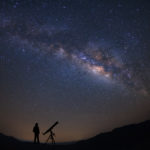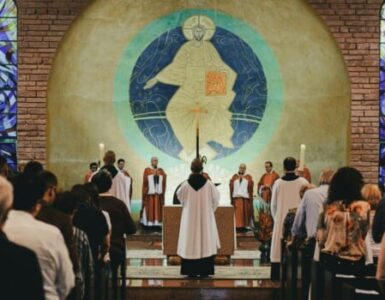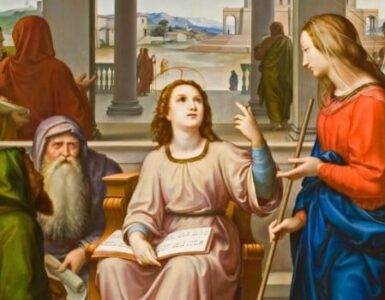Astronomers study a universe long after it came into operation. The fact that they are willing to study it presupposes that the universe is amenable to being studied. This is to say that they have faith that the microcosm of man’s mind is attuned to the macrocosm of the outside world, that the universe can be read by the intelligence of the human person. Science assumes that the universe is ordered and discovers more and more reasons to believe that it is so.
Science does not validate its own initial assumptions. It does not explain, scientifically, how the cosmos got to be intelligible in the first place. It does not explain the natural affinity that exists between microcosm man and macrocosm world. Yet it cannot proceed without an abiding faith that the universe is intelligible and orderly, and that man is a knower of reality and not merely a thinker of thoughts.
In May of 2022, two Italian priests of the Vatican Observatory have found additional reason to support the hypothesis that the universe is an ordered cosmos and not one that is marked by chaos or inconsistency. Jesuit astronomers Father Gabrielle Gionti and associate astronomer Father Matteo Galverni have discovered that a new mathematical approach which, in their words, “confirms that our universe appears mathematically ordered and harmonious.” Their results have been published in the prestigious scientific journal, Physical Review D. The two scientists contend that their approach will help other astronomers better understand how gravity behaved at the time of the Big Bang when the universe came into being.
They do not claim that their findings provide a proof for the existence of God. However, they agree that “It makes sense for a person to think that this order is the fruit of a creation by a benevolent God.” Scientists continue to find evidence that their initial assumption, namely the faith that the universe is ordered, is correct. Faith precedes science and together, they move in the direction of wisdom.
Einstein famously stated that for him, that which is most incomprehensible is the fact that the universe is comprehensible. How did the universe get to be comprehensible for man? It is most unlikely that it could have happened without a third factor bringing them into harmony with each other. It is as if someone invented a language on his own and then came across a book written in that very language. This concurrence could not be the result of chance. When Margaret Mead was studying a primitive culture, she happened to have with her two copies of one of her books. The fact that these books were perfectly identical—word for word, letter for letter—astonished the natives who, never having seen a printing press, could not begin to understand how two things could be exactly the same in every detail. Everything in their experience was singular. They sensed that a third factor must have been responsible for establishing this concurrence, but whatever it might be was a complete mystery for them. Could it be that God is the Designer—a kind of printing press in the sky—or that third factor, which explains how the mind of man can read the laws of nature?
The scientist must make an initial act of faith that the world to which he applies reason is one whose laws are both intelligible and consistent. He must believe this, or else he would lose heart and fear that the laws of the universe are like the croquet game in Alice in Wonderland where the rules of the game change from moment to moment by the arbitrary decree of the Queen. For this reason, Norbert Wiener—“Father of Cybernetics,” who received a Harvard Ph.D. in mathematics at 18, and whose book, God and Golem, Inc., earned him the National Book Award in 1964—asserts that “Science is impossible without faith.” The scientist could not begin to practice his craft if he did not believe that the physical universe operated according to regular and intelligible laws. As Pope Leo XIII has said of Aquinas, “Just when St. Thomas distinguishes between faith and reason, he unites them in bonds of mutual friendship, conceding to each its specific rights and to each its specific dignity.” For Aquinas, nature stands midway between man and God. As man begins to understand the laws of nature, he begins to understand the eternal law that resides in God.
Etienne Gilson has stated that “The central intuition which governs the whole philosophical and theological understanding of Saint Thomas is that it is impossible to do justice to God without doing justice to nature, and that doing justice to nature is at the same time, the surest way of doing justice to God” (“Nature and God. St. Thomas Aquinas,” Proceedings of the British Academy, Vol. XXI, London: Oxford Press, 1936, pp. 29-45). For Aquinas, man, nature, and God form a harmonious whole. The same might be said for the mind of man, science, and the Creator.
Faith in the possibility of science is amply justified as science continues to strengthen our faith in the existence of God. Arthur Koestler has described scientists as Peeping Toms at the keyhole of eternity. This cycle from faith in science to science and to faith in a transcendent Creator is what we might call a “cycle of wisdom” for it belongs to the wise man to order (Sapientis est ordinare).
✠














